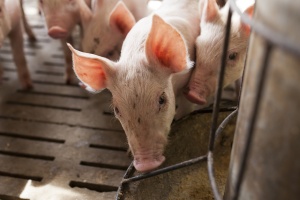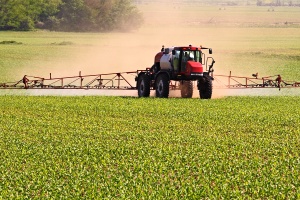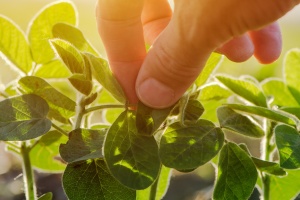Harvest 2020 is over – now what?
Fall harvest is a busy time for farmers. The 2020 harvest is no different, and in a year of unpredictability, I appreciate the routine. Take a drive outside the city, and you’ll see a lot of combines and other equipment working in the fields, sometimes around the clock, to get crops out before any bad weather arrives.
The same goes for our fifth-generation farm, although I am just as likely to be caring for our dairy cow herd as I am combining corn and soybeans, or doing weed research for Purdue University. I put in a lot of long hours all year wearing so many hats. But I wouldn’t have it any other way. Farmers are stewards of 75% of our state’s land, so we take seriously the responsibility of nurturing it and keeping it productive for agriculture uses. So while it’s a busy season, it’s also the best time of the year – we get to see how the crops yield and how our planning paid off.
You might think that our activity on the farm would slow down after the common go-go-go mentality of harvest. After all, the crops have been gathered and either stored in large bins for sale, stored on the farm for later use or transported to a buyer to take the next step toward becoming food, fuel and animal feed.
But that isn’t the case. As soon as harvest 2020 is finished, we’re on to the next thing needing our attention. Cooler, shorter days take me inside for recordkeeping and for preparing for next season, always with the goal of meeting the needs of our land and of our customers.
We spend time thinking about what you want from your food. Farmers make up a small part of the working population, just 2%. The average person is further removed from the farm today than ever, so I make a point of sharing how I treat our soils and our animals with great care. Food safety, the health of our cows and using best management practices to raise crops sustainably is in the best interest of everyone.
For example, we raise crops on our farm that do well in our geography. Our family grows double-crop soybeans in Washington County, just southeast of St. Louis, because it is the top winter wheat producing county in the state. We take advantage of a growing season that allows us to raise not only full-season crops, but also to plant and harvest two crops from the same fields in one year. We plant wheat in the fall, harvest it the next summer and plant soybeans for fall harvest.
This process keeps crops growing and protects our soils all year long – a critical resource for sustainable food production. We also can supply more to the market and spread the risk of our farm business when we diversify our crops.
Now that the 2020 harvest is wrapping up, I am switching gears to prepare for 2021. I am reviewing the impact weather had on our fields this year and the weed control plan we will use next year.
My dad says that in his lifetime of farming, he has not seen so much water flow through our fields like he has seen the last five years. We have watched new gullies develop following the big rain events we seem to get now, which can cause major soil erosion. Illinois is home to some of the most fertile soil in the world, so we want to keep it in the field and not let it be washed or blown away. To address this, we will be building berms in those fields. Think of these as a raised grassy barrier that slows down the water, allows the soil to settle and sends any extra water underground and through drainage tile.
The last few years have also seen a stubborn weed problem spread. Waterhemp is a weed that’s hard to control, spreads easily from one field or farm to the next and affects crop yields. I am taking a look at the options we have to safely manage waterhemp without harming the growing crop.
Any growing season can (and definitely will) throw us curveballs – kind of like the year 2020 has been for all of us. But even with challenges and setbacks, we can find ways to keep going, and keep improving, and keep meeting the needs of those around us.
Nick Harre, Ph.D., from Nashville, Illinois, raises corn, soybeans, wheat, alfalfa and dairy cows on a fifth-generation family farm, and is also a visiting weed science scholar for Purdue University.










0 Comments